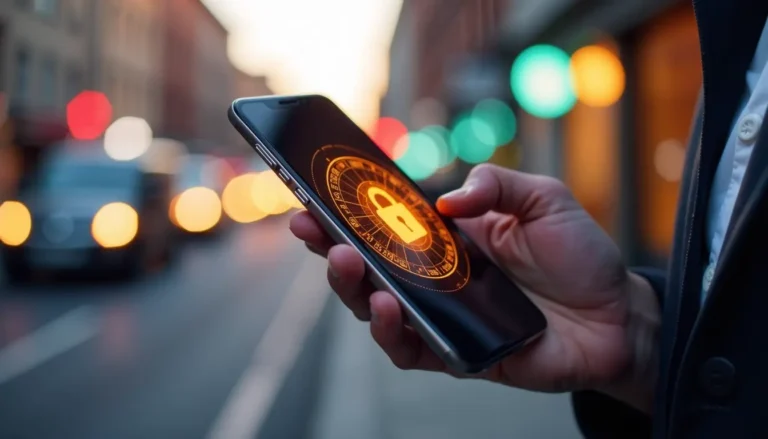
Anúncios
Sending money should be simple and secure, yet many find bank transfers cumbersome or slow. If you’ve ever hesitated to transfer funds digitally, you’re not alone. The good news is that bank transfer apps are revolutionizing the way we move money – faster, safer, and more convenient than ever before. Explore how these apps empower you to send and receive payments effortlessly and with confidence.
Understanding What a Bank Transfer App Is and Why It Matters
A bank transfer app is a specialized mobile application designed specifically to move money quickly and securely between bank accounts. Unlike traditional online banking websites, these apps focus on making transfers fast and easy, often reducing the wait times associated with older systems. Their primary purpose is to enable users to send and receive funds without needing to visit a bank, write checks, or carry cash. This convenience fits perfectly with the fast pace of modern life.
While traditional online banking services offer a range of functions like checking balances or paying bills, bank transfer apps concentrate on streamlining money movement. For instance, they often support instant or near-instant transfers, which traditional methods may not offer. Many of these apps also integrate features such as splitting bills, scheduling payments, or linking multiple accounts, enhancing their usefulness beyond just sending money.
Security is a fundamental benefit of bank transfer apps. They use strong encryption and authentication methods, like biometrics or two-factor authentication, to protect users’ financial data. This makes them safer than carrying cash or using unsecured payment methods. Many apps also notify users instantly about transactions, increasing awareness and reducing fraud risks.
Anúncios
Bank transfer apps have revolutionized how individuals and businesses handle transactions. Small businesses can pay suppliers instantly, and friends can settle debts without hassle. Because these apps are accessible on smartphones, users can transfer funds anytime, anywhere. Their simple interfaces make financial management much easier for everyone, no matter their tech skills.
Steps to Set Up Your Bank Transfer App Safely and Effectively
When choosing a bank transfer app, start by researching options available in the US market. Focus on apps with strong security features like two-factor authentication and encryption. User reviews are invaluable; they reveal real experiences about app reliability and ease of use. Look for features that fit your needs, such as instant transfers, low fees, or connection to multiple bank accounts.
Downloading your chosen app from official sources like the Apple App Store or Google Play Store is the safest route. Avoid third-party sites to minimize risks of malware or tampered apps. Once installed, open the app and follow its onboarding prompts carefully.
Linking your bank account is the next crucial step. Most apps will require you to enter your bank details or securely connect via your bank’s online credentials. Some apps use micro-deposits or instant verification methods—be sure to complete these steps fully to enable smooth transfers.
Identity verification often involves providing personal details and sometimes a photo ID. This step protects you and others by complying with banking regulations. Be cautious: only share sensitive information within the app’s secure environment, signified by encrypted connections (look for “https” in URLs).
Set up your security preferences thoughtfully. Create a strong, unique PIN or password, and enable biometric options like fingerprint or facial recognition if your phone supports them. These extra layers prevent unauthorized access without making the process cumbersome.
To protect your privacy during setup, avoid using public Wi-Fi networks and keep your device’s software updated. Regularly review app permissions and disable any unnecessary access to contacts or location data. By following these steps, you ensure your bank transfer app is ready for fast, safe transactions.
How to Make a Fast Bank Transfer Using the App
To start a fast bank transfer using your bank transfer app, first open the app and log in securely. Navigate to the transfer section, often labeled as “Send Money” or “Transfer Funds.” Here, you’ll be prompted to enter the recipient’s details. You can usually send money using their phone number, email address, or directly via their bank account number. Make sure to double-check these details to avoid errors.
Next, choose the amount you want to send. The app will often display your available balance, so you know how much you can transfer immediately. Some apps let you add a note or description for the transfer, which can be helpful for both you and the recipient to identify the payment later.
Now, select the type of transfer. Most bank transfer apps offer options like instant transfers that happen right away, scheduled transfers that happen on a specific future date, or recurring transfers that repeat automatically at set intervals. Picking the right type depends on your needs. For a fast payment, choose “instant” if available.
Before you finalize, review all the details carefully. Confirm the recipient’s information, transfer amount, and transfer type. Once everything looks correct, hit the “Confirm” or “Send” button to complete the transaction. The app will usually show a confirmation screen with a transaction ID or reference number.
After sending, you can track the transfer status in the app’s activity or history section. Most transfers show as completed within seconds or minutes, letting you know your money arrived safely. These apps use reliable banking networks, making fast transfers both convenient and secure.
Key Security Features That Keep Your Transactions Safe
Bank transfer apps use powerful security features to keep your money and personal information safe. One key tool is data encryption. This means that when you send information, like your account number or transfer amount, it is scrambled so hackers can’t read it. Encryption protects your data while it travels between your phone and the bank’s servers.
Another important feature is multi-factor authentication (MFA). Instead of just a password, MFA asks for extra proof you are really you—such as a code sent to your phone or your fingerprint. This extra step makes it much harder for someone else to access your app, even if they know your password.
Banks also use fraud monitoring systems that watch for unusual activity. If the app notices something suspicious, like a transfer from a new device or an unknown location, it can immediately block the action or ask you to confirm. This helps stop fraud before it happens.
To keep your account secure, always update your bank transfer app when new versions are available. Updates fix security holes and improve protection. Be cautious about emails or messages asking for personal or banking info—these are often phishing attempts designed to steal your data. Also, make sure your phone has a strong passcode or biometric lock, and avoid using public Wi-Fi for transactions.
By understanding and using these features, you can trust that your bank transfer app is designed to protect you every step of the way.
Troubleshooting Common Issues When Using Bank Transfer Apps
When using a bank transfer app, encountering issues like failed transactions or app crashes can be frustrating. A common first step is to check your internet connection. A weak or unstable connection often interrupts the transfer process or causes the app to freeze. Switching between Wi-Fi and mobile data can sometimes resolve the problem quickly.
Always double-check the recipient’s details before confirming a transfer. Mistyped account numbers or incorrect bank codes are frequent causes of failed payments. Even a small error can send your money to the wrong person or cause the transaction to be rejected. Taking a moment to verify these details can save time and avoid unnecessary headaches.
Delayed transfers happen occasionally, especially during weekends, holidays, or when the bank’s systems are busy. In such cases, patience is important. Most apps will update the transaction status once the payment clears. If a transfer remains pending for more than 24 hours, contact customer support for assistance.
App crashes or freezing may be due to outdated software. Make sure your bank transfer app is updated to the latest version to access bug fixes and performance improvements. Clearing the app’s cache or reinstalling it can also help solve persistent problems.
To prevent errors, carefully review the transfer amount and expiration times on payment links before submitting. Avoid rushing through these steps. If an issue persists, customer support is your best resource—they can provide guidance tailored to your specific situation.
Staying calm and persistent is key. With these tips, you can tackle most common issues and ensure smooth, secure transactions through your bank transfer app.
Maximizing Your Experience with Advanced Features and Tips
Bank transfer apps offer much more than just sending money. Many include handy features like paying bills directly from your account. Instead of juggling multiple websites or apps, you can settle utilities, credit card payments, or subscriptions right within the app. This centralizes your finances and saves time.
Splitting costs with friends or family has never been easier. Use the app’s split payment feature to divide expenses like dinners, rent, or group gifts. It even tracks who owes what, reducing confusion and awkward conversations.
Keeping detailed transaction records is another smart tool. Your bank transfer app can store past transactions, making budgeting and tax preparation simpler. Some apps provide customizable reports or graphs so you can visualize spending patterns over weeks or months.
Many apps also include budgeting tools. You can set spending limits, categorize expenses, and get alerts when you approach your budget. This proactive management helps prevent overspending and keeps your financial goals on track.
For smoother daily use, set up alerts for incoming and outgoing transfers. Notifications keep you informed of account activity without constant checking. Automating regular transfers, like rent or savings deposits, eliminates the risk of forgetting payments and helps maintain consistent money management.
Integrations with other financial tools amplify convenience. Sync the app with investment platforms or accounting software to view your complete financial picture. These connections make it easier to analyze and control your money across accounts.
By exploring and utilizing these advanced features, your bank transfer app becomes a powerful partner in managing finances securely and efficiently.
Final Thoughts on Using a Bank Transfer App
Bank transfer apps have transformed the way we handle payments, making transactions faster, easier, and more secure than ever. By understanding their features and best practices, you can confidently send and receive money anytime, anywhere.
Remember to choose apps that prioritize security and user experience, and always stay vigilant about protecting your personal information. With the right approach, bank transfer apps can simplify your financial life significantly.
We’d love to hear your experiences or tips using bank transfer apps! Feel free to share your thoughts in the comments or spread the word by sharing this post with friends and family seeking hassle-free banking solutions.



